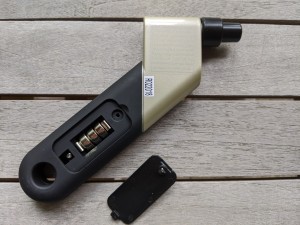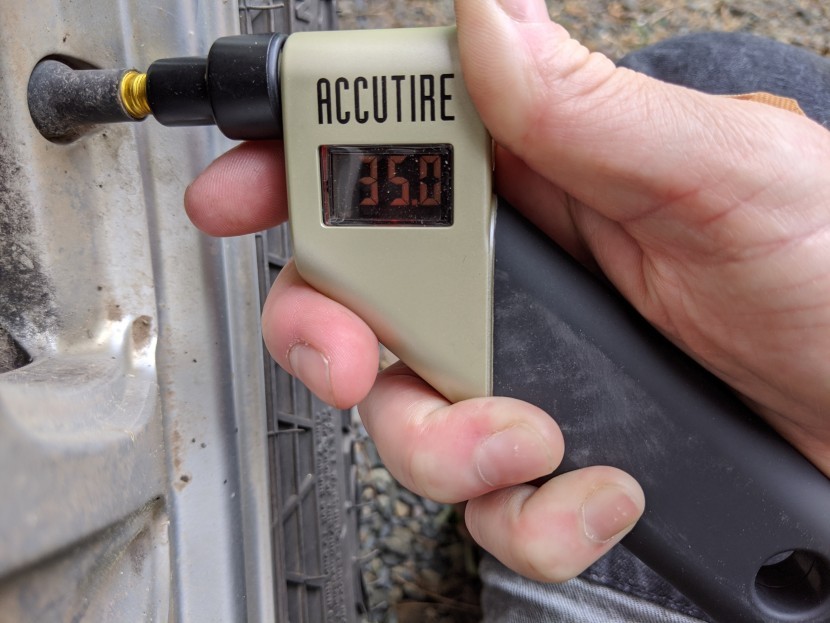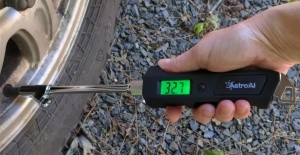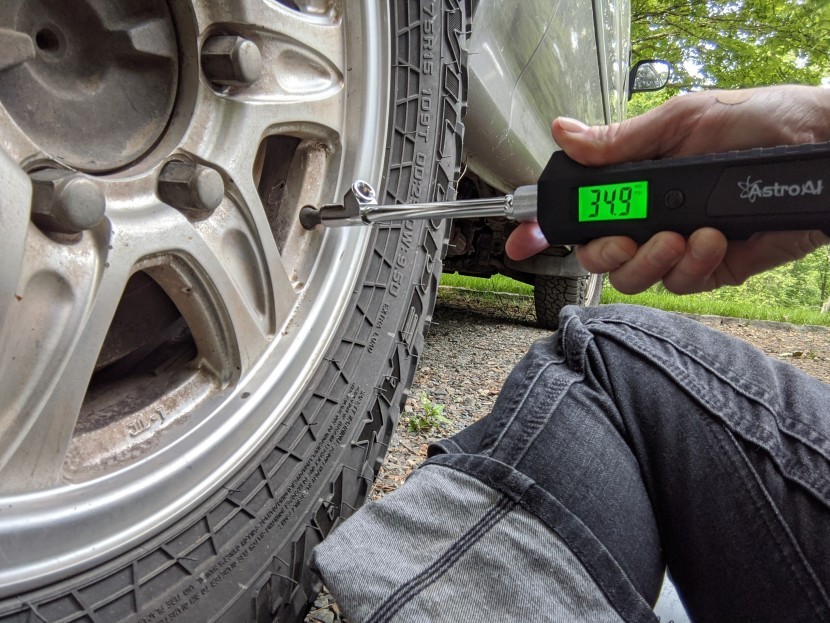Maintaining optimal tire pressure is paramount for vehicle safety, fuel efficiency, and tire longevity. While traditional stick gauges have served for decades, digital tire pressure gauges offer enhanced accuracy and ease of reading, quickly becoming essential tools for vehicle maintenance. In this comprehensive guide, we delve into the top-rated digital tire pressure gauges available today, drawing on rigorous testing and expert analysis to help you select the best option for your needs.
Accutire MS-4021 Digital
OVERALL SCORE: 76
- Accuracy: 9.0
- Durability: 8.0
- Ease of Pressure Check: 9.0
- Ease of Reading: 5.0
- Features: 5.0
REASONS TO BUY:
- Exceptional Accuracy
- Ergonomic Design
- Effortless Valve Alignment
REASONS TO AVOID:
- Lacks Bleeder Valve
- Display Readability Could Be Improved
- Unit Cycling Not User-Friendly
SPECIFICATIONS:
| Feature | Specification |
|---|---|
| Increments | 0.5 psi |
| PSI Range | 5 to 150 |
| Accuracy | +/- (1%+1LSD) – recalibration directions |
| Unit Settings | PSI, BAR, kPa, Kg/cm² |
| Operating Temp | 14 to 122F |







The Accutire MS-4021 Digital stands out not for its visual appeal, but for its unwavering performance. In our tests, it consistently delivered accurate readings, establishing itself as our top pick for overall digital tire pressure gauge. Its thoughtfully designed ergonomic shape ensures that thumb pressure is directly aligned with the tire valve, promoting consistent and reliable measurements. The rubberized handle enhances grip and comfort for users with various hand sizes. A practical feature is its ability to freeze the pressure reading on the display, eliminating the need to rush to view the measurement.
Accuracy is a key strength of the Accutire, precise to 0.5 PSI, with user-friendly recalibration instructions provided. It also boasts a wider operating temperature range compared to many digital competitors, functioning reliably from 14 to 122 degrees Fahrenheit. However, the digital display, while functional, can present readability challenges. We often found ourselves needing to reposition the gauge to angle the rose-colored LCD screen for optimal viewing. Switching between pressure units requires a somewhat unintuitive long press of the “wake up” button. The lightweight construction, while convenient, might feel less robust to some users. Battery replacement, using three LR44 coin cells, is a slightly cumbersome process. Despite these minor drawbacks, the Accutire MS-4021 remains our preferred digital gauge due to its core performance strengths, making it an excellent addition to any glove compartment. For those seeking a more budget-conscious option, the Milton S-921 Pencil Gauge offers a dependable, albeit less precise, alternative.
The Accutire is accurate and user-friendly. Our only minor complaint is the display’s readability in certain lighting conditions.
Credit: Clark Tate
AstroAI Digital Dual Head 230 PSI
OVERALL SCORE: 68
- Accuracy: 5.0
- Durability: 8.0
- Ease of Pressure Check: 5.0
- Ease of Reading: 10.0
- Features: 7.0
REASONS TO BUY:
- Ideal for Larger Tires
- Dual Head Design for Inward Valves
- Exceptional Display Clarity
- Integrated Flashlight
REASONS TO AVOID:
- Bulky for Glove Compartments
- Two-Handed Operation Recommended
- Limited Low-Temperature Operation (23F minimum)
- No Pressure Release Function
SPECIFICATIONS:
| Feature | Specification |
|---|---|
| Increments | 0.1 PSI |
| PSI Range | 0 to 230 |
| Accuracy | Not Specified |
| Unit Settings | PSI, Bar, Kg/cm², Kpa |
| Operating Temp | 23 to 122F |
For vehicles with high tire pressure requirements or tires featuring inward-facing valves, the AstroAI Digital Dual Head 230 PSI digital tire gauge is a strong contender. Its dual-head chuck design ensures a secure seal on tire valves regardless of orientation, making it particularly useful for trucks and RVs. The bright green backlit LCD screen provides unparalleled readability, even in direct sunlight or low-light conditions. An integrated flashlight further enhances usability by illuminating the tire valve area in dim environments. Constructed with a robust stainless-steel chuck and powered by easily replaceable AAA batteries, this gauge is built for durability.
However, its larger size can be cumbersome for standard glove compartments, and the extended gauge length can make alignment slightly more challenging, potentially leading to inaccurate readings or air loss if not handled carefully. While it can be operated with one hand, achieving consistent and accurate measurements is easier with two-handed use. Its operating temperature range starts at a relatively high 23 degrees Fahrenheit, which might be a limitation in colder climates. Notably, it lacks a pressure release valve. Despite these considerations, the AstroAI Digital Dual Head 230 PSI remains a valuable tool, especially for heavy-duty applications or users prioritizing display visibility and features like the built-in flashlight. For users seeking a digital gauge with battery-free operation and certified accuracy, the JACO ElitePro 100 PSI presents an alternative.
The dual-head design of the AstroAI Digital Dual Head gauge accommodates both inward and outward-facing valves, offering versatility and ease of use.
Credit: Clark Tate
AstroAI Digital 150 PSI (Budget Digital Pick – Mentioned in Original Article)
While not a standalone reviewed product in the original article, the AstroAI Digital 150 PSI is mentioned as a budget-friendly digital option. Based on the brand’s other digital offerings and general market positioning, we can infer some key characteristics:
- Likely Features: Digital display (likely backlit blue LCD similar to the Dual Head), multiple unit settings (PSI, BAR, kPa, Kg/cm²), automatic shut-off, ergonomic handheld design.
- Expected Strengths: Affordable price point, improved accuracy and readability over analog gauges, compact size for glove compartment storage.
- Potential Limitations: Accuracy might be slightly less precise than higher-end digital gauges like the Accutire, durability might be less robust than heavy-duty options, features are likely basic (no flashlight or advanced functions).
For users seeking an entry-level digital tire pressure gauge that offers a step up from analog stick gauges without breaking the bank, the AstroAI Digital 150 PSI is likely a solid choice. It balances affordability with the core benefits of digital technology – improved readability and potentially better accuracy than basic pencil gauges.
Comparing Digital vs. Analog Tire Pressure Gauges
The market offers both digital and analog tire pressure gauges, each with distinct advantages and disadvantages:
Digital Tire Pressure Gauges:
-
Pros:
- Enhanced Accuracy: Generally provide more precise readings than analog gauges.
- Easy Readability: Digital displays are typically clear and easy to read, especially in varying lighting conditions, often featuring backlights.
- Multiple Units: Often display readings in multiple units (PSI, BAR, kPa, Kg/cm²), offering versatility.
- Features: Some models include added features like flashlights, pressure release valves, and data logging.
-
Cons:
- Battery Dependence: Require batteries to operate, which can fail or need replacement. Performance can be affected by cold temperatures.
- Durability Concerns: May be more susceptible to damage from drops or impacts compared to robust analog gauges.
- Cost: Generally more expensive than basic analog pencil gauges.
Analog Tire Pressure Gauges:
-
Pros:
- Battery-Free Operation: Function without batteries, ensuring reliability in all conditions.
- Durability: Simple mechanical design makes them very robust and long-lasting.
- Affordability: Typically less expensive than digital gauges, especially pencil gauges.
- Bleeder Valves (Dial Gauges): Dial analog gauges often include integrated bleeder valves for controlled pressure release.
-
Cons:
- Lower Accuracy: Generally less accurate than digital gauges. Stick gauges, in particular, can be prone to parallax errors.
- Readability Challenges: Can be harder to read precisely, especially in low light or for users with visual impairments.
- Limited Features: Typically lack advanced features found in digital gauges.
The choice between digital and analog depends on individual needs and priorities. Digital gauges excel in accuracy and readability, while analog gauges offer robustness and battery-free reliability. For users prioritizing precision and convenience, especially for modern vehicles with recommended precise tire pressure levels, digital gauges are often the preferred choice.
How We Test Digital Tire Pressure Gauges (and Analog Gauges – Methodology from Original Article)
To ensure objective and reliable recommendations, we subjected each tire pressure gauge to a rigorous testing process. We purchased all gauges and developed a comprehensive test plan to evaluate their performance across key metrics. Our team, composed of automotive enthusiasts and experts, brought decades of collective experience to the evaluation process. Testing focused on five core criteria:
- Accuracy (30% Weighting): We used a calibrated digital tire inflator to set tire pressure to a consistent 35 PSI. Each gauge was then used to take ten pressure readings, repeated three times. We averaged the readings to assess accuracy and consistency against the known 35 PSI baseline.
- Durability (25% Weighting): While not destructively tested, durability was assessed based on build quality, materials, and user reviews. We considered factors like housing robustness, chuck construction, and hose quality (for dial gauges). Our long-term experience with various gauge types also informed this evaluation.
- Ease of Pressure Check (15% Weighting): We evaluated how easily each gauge formed a secure seal with the tire valve, minimizing air leakage and ensuring accurate readings. Factors considered included chuck design, ergonomics, and the force required to achieve a proper seal.
- Ease of Reading (15% Weighting): Readability was assessed in various lighting conditions, evaluating display clarity, backlight effectiveness (for digital gauges), and dial/stick gauge markings.
- Features (15% Weighting): We evaluated the presence and functionality of additional features such as bleeder valves, flashlights, multiple unit settings, and memory functions.
This comprehensive testing methodology allowed us to objectively compare and rank the tire pressure gauges, providing data-driven recommendations.
Why Trust Our Digital Tire Pressure Gauge Reviews (EEAT – Expertise, Experience, Authoritativeness, Trustworthiness from Original Article)
Our tire pressure gauge reviews are spearheaded by experienced testers like Clark Tate, a vanlifer and outdoor enthusiast who relies on reliable tools daily. Clark’s expertise extends to both automotive and bicycle tire maintenance, regularly using pressure gauges for her van and mountain bikes. Her hands-on experience in diverse conditions, from highway driving to off-road adventures, provides a practical and insightful perspective on tire pressure gauge performance.
GearLab’s commitment to unbiased and thorough testing ensures the authoritativeness and trustworthiness of our reviews. We purchase all products for testing and implement a rigorous, standardized methodology. Our reviews are independent and not influenced by manufacturers or retailers. We prioritize providing helpful and accurate information to empower consumers to make informed purchasing decisions. Our detailed testing process and transparent methodology demonstrate our dedication to Expertise, Experience, Authoritativeness, and Trustworthiness (EEAT), core principles for credible and helpful content.
A Kobalt air compressor, similar to digital inflators with gauges, was used to standardize tire pressures during our testing process.
We meticulously took multiple readings with each gauge to ensure accuracy and identify any inconsistencies.
An AstroAI inflator gauge was used to standardize tire pressure at 35 PSI between test sets, ensuring consistent testing conditions.
Credit: Clark Tate
Conclusion: Choosing the Best Digital Tire Pressure Gauge
Selecting the right digital tire pressure gauge is a worthwhile investment for vehicle owners. The Accutire MS-4021 Digital emerges as our top recommendation for its exceptional accuracy, ergonomic design, and ease of use, solidifying its position as the best overall digital tire pressure gauge in our review. For heavy-duty applications or users needing to measure high tire pressures, the AstroAI Digital Dual Head 230 PSI, with its robust build and dual-head chuck, is a compelling alternative. The AstroAI Digital 150 PSI (inferred characteristics) likely represents a strong budget-friendly entry point into the world of digital gauges.
Ultimately, the ideal choice depends on your specific needs and budget. Consider factors like accuracy requirements, vehicle type, desired features, and personal preferences for display readability and gauge size. By utilizing this comprehensive review, you can confidently select a top-rated digital tire pressure gauge that will contribute to safer driving, extended tire life, and optimized fuel economy.
For further automotive tool recommendations to enhance your vehicle maintenance toolkit, explore our reviews of tool sets. Drive safely and enjoy the benefits of properly inflated tires!